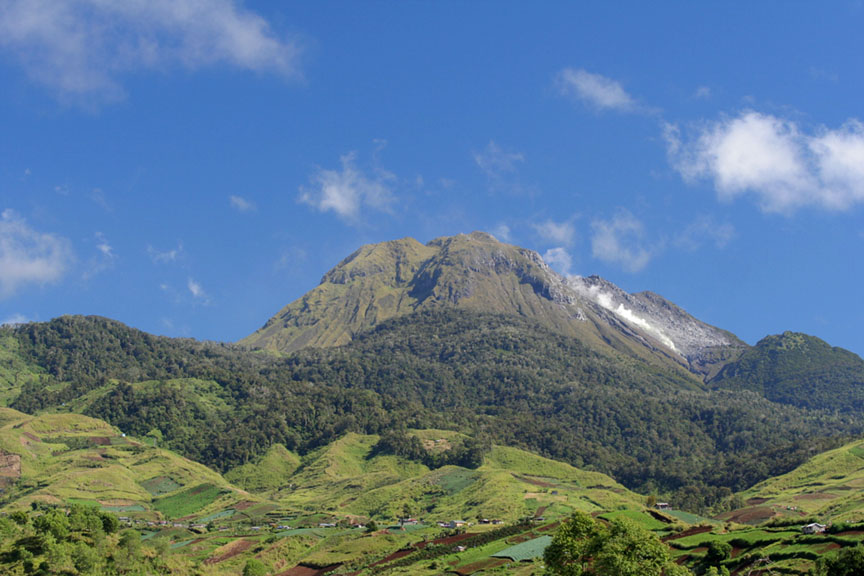 Mt. Apo, the country’s highest peak. MindaNews file photo by BOBBY TIMONERA
Mt. Apo, the country’s highest peak. MindaNews file photo by BOBBY TIMONERA
DAVAO CITY (MindaNews / 04 August) – The annual three-month off-season at the Mt. Apo Natural Park will be fully enforced starting 2022, with simultaneous closure of trails in Regions 11 and 12 from June to August, to allow its flora and fauna to spawn in an “undisturbed space and time.”
The measure is contained in Resolution No. 06 of the Mt. Apo Protected Area Management Board (PAMB) en banc passed on July 28.
The resolution say the regular off-season will facilitate rehabilitation, improvement of public services, disaster risk prevention, biodiversity preservation, and strengthening of law enforcement mechanisms.
It came more than four years after a forest fire that lasted for over two weeks engulfed the peak of Mt. Apo.
All trekking activities will be prohibited during the off-season.
The PAMB is the policymaking body of every protected area. As provided for in the National Integrated Protected Areas (NIPAS) Act, it is chaired by the regional director of the Department of Environment and Natural Resources (DENR).
In a statement released on Tuesday, the DENR-Davao said the off-season was initially implemented covering the trails in Davao Region last July and will end in September. Beginning next year, it will be enforced simultaneously in the trails in Regions 11 and 12.
Activities to be undertaken during the off-season include tree planting along the trails, seedling propagation and wildling collection, site adoption for the reforestation activities, improvement of infrastructures, installation of facilities, and capacity-building for guides, porters and park protection officers, it said.
The off-season is also “primed for the flora and fauna species to have an ‘undisturbed’ space and time especially that these months are the breeding or mating period of some bird species,” it added.
Jayvee Jude Agas, head of the regional public affairs of DENR-Davao, said discussions on the off-season started during a PAMB meeting in March this year but it was only in July that the resolution was approved.
Mount Apo, the country’s highest peak at 2,954 meters above sea level, is a biodiversity hotspot. It is included in the UN List of National Parks and Equivalent Reserves and acknowledged as an ASEAN Heritage Site.
It was proclaimed as a protected area under the NIPAS Act of 1992.
The law was amended through Republic Act 11038 or the Expanded NIPAS Act of 2018. The amendment led to the legislation of additional 94 protected areas.
Mt. Apo is home to the Philippine Eagle (Pithecophaga jefferyi), the country’s national bird.
The International Union for the Conservation of Nature listed the raptor as critically endangered.
Mt. Apo measures 64,000 hectares spanning North Cotabato province in Region 12 and Davao del Sur province and Davao City in Region 11.
It serves as a major water source for both regions. (Antonio L. Colina IV/MindaNews)
